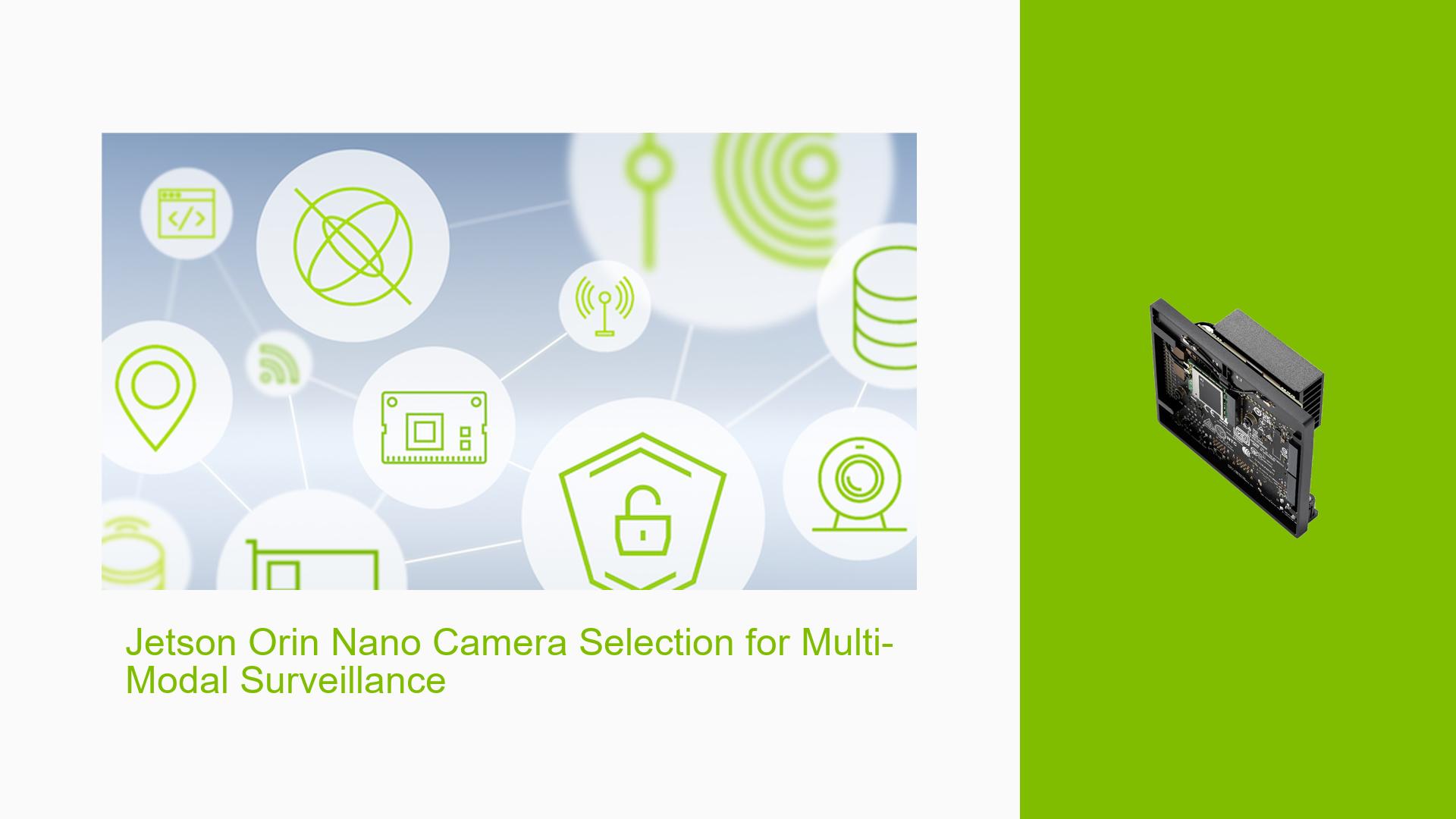Jetson Orin Nano Camera Selection for Multi-Modal Surveillance
Issue Overview
The user is seeking assistance in selecting appropriate camera and sensor equipment for a Jetson Orin Nano-based surveillance system. The system is intended to monitor a large area, such as a Walmart-sized parking lot, as well as detect potential intruders or fire hazards in an adjacent forested area. The specific requirements include:
- A high-resolution camera capable of wide-area surveillance
- An LWIR (Long-Wave Infrared) camera for thermal imaging
- A wide-range microphone for audio detection
- Compatibility with the Jetson Orin Nano development board
- Initially considered USB connectivity for ease of use, but found limitations in camera quality
The user is experiencing difficulties in finding suitable cameras that meet these requirements, particularly when considering USB connectivity.
Possible Causes
-
Limited USB Camera Options: High-performance cameras often require interfaces with higher bandwidth than USB, which may explain the lack of suitable USB options.
-
Compatibility Issues: Not all cameras are compatible with the Jetson Orin Nano’s architecture or software ecosystem.
-
Power Constraints: The Jetson Orin Nano may have power limitations that affect the selection of high-performance cameras and sensors.
-
Software Support: Lack of proper drivers or software support for certain camera models on the Jetson platform.
-
Bandwidth Requirements: The multi-modal approach (visual, thermal, and audio) may require more bandwidth than USB can provide.
Troubleshooting Steps, Solutions & Fixes
-
Explore MIPI CSI-2 Cameras:
- Consider MIPI CSI-2 interface cameras instead of USB for better performance and compatibility with Jetson platforms.
- Look into SONY IMX sensors that are commonly used in surveillance applications.
-
Check NVIDIA’s Ecosystem Partners:
- Visit NVIDIA’s partner page to find camera manufacturers that offer Jetson-compatible products.
- Look for partners specializing in machine vision and surveillance solutions.
-
Consider Separate Devices for Each Modality:
- Use a high-resolution MIPI CSI-2 camera for visual surveillance.
- Add a dedicated LWIR camera module for thermal imaging.
- Integrate a separate high-quality microphone for audio detection.
-
Evaluate Network Cameras:
- Consider IP cameras that can connect via Ethernet, potentially offering higher resolution and better performance than USB options.
- Ensure the Jetson Orin Nano’s network interface can handle the bandwidth requirements.
-
Optimize Software Stack:
- Ensure you’re using the latest JetPack SDK version for optimal camera support.
- Check NVIDIA’s documentation for recommended camera drivers and software.
-
Power Management:
- Calculate the power requirements for your chosen camera setup.
- Consider using a powered USB hub or additional power supply if needed.
-
Custom Integration:
- If off-the-shelf solutions are inadequate, consider working with a system integrator to develop a custom camera solution for your specific needs.
-
Thermal Considerations:
- Ensure proper cooling for the Jetson Orin Nano, especially when using multiple high-performance cameras and sensors.
-
Software Development:
- Utilize NVIDIA’s DeepStream SDK for efficient multi-stream processing.
- Implement efficient algorithms for simultaneous processing of visual, thermal, and audio data.
-
Testing and Validation:
- Set up a small-scale test environment to validate camera performance before full deployment.
- Use NVIDIA’s VPI (Vision Programming Interface) to optimize image processing tasks.
Remember to consult NVIDIA’s official documentation and community forums for the most up-to-date information on compatible hardware and best practices for multi-modal surveillance applications on the Jetson Orin Nano platform.
